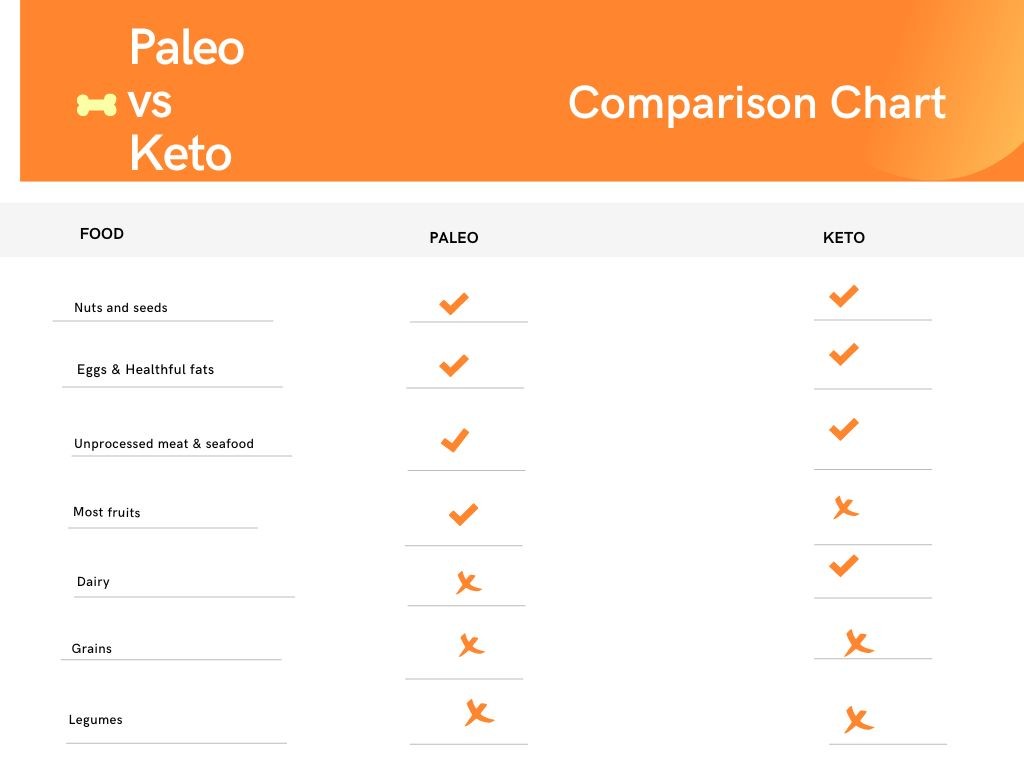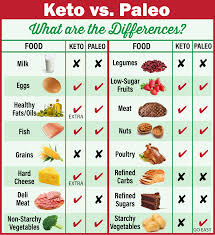The paleo diet and keto are trendy today. Despite their differences, they share many similarities. Fundamental in their similarities is the employment of these strategies in weight loss. Let us first look at what these diets mean.
What is a Paleo diet?
The Paleo diet is an eating plan modeled on prehistoric human diets. The idea behind a paleo diet is to eat foods likely eaten by early humans.
The paleolithic diet, or caveman diet, tends to cut modern foods from our diet and go back to the way our early ancestors lived.
In its simplest form, the paleo diet allows you to eat only those foods that humans ate about 2.5 million years ago to 10,000 years ago. These are the foods humans ate during the Paleolithic era. Hence where the name originated from.
The Paleo diet can improve your health by eliminating high-fat and processed foods that have little nutritional value to you. Too many calories aren’t good for the body either. This plan relies on loading up on fruits and vegetables that are bursting with healthy vitamins, minerals, and fiber, which fills you up faster so you eat less, helping curb weight gain.
According to the fans of the diet, cutting out foods such as dairy, grains, processed foods and legumes can help a person lose weight and prevent heart disease and diabetes.
If you plan to try the paleo diet, you will eat a lot of meat, fish, fruits, vegetables, nuts, and seeds. This diet is believed to be beneficial for type 2 diabetes and cardiovascular health. It has also been shown to regulate your blood sugar and cholesterol.
You will lose weight because your calorie intake will be lower if you restrict the entire food you take.
What is a Keto diet?
A keto diet is an eating plan that takes a lot of healthy fat, some protein, and fewer carbohydrates.
The body basically uses carbohydrates as fuel for energy in the form of glucose. When a person does not get enough carbohydrates, the body will start using up fat and some protein stores. During ketosis, the liver will take stored fat and turn it into ketones, which the body then uses for energy. Reaching this state of ketosis is the ultimate goal of the keto diet.
Basically, a person on a keto diet should consume:
- 70–80% fat
- 20–25% protein
- 5–10% carbohydrates
A dedicated chapter on how you can start a keto diet is here for you.
The keto diet supports and excludes certain foods. One who is on the keto diet cannot get carbohydrates from grains or legumes. Their carbs must come from a keto-friendly vegetable, such as leafy greens, or a small group of fruits, primarily berries.

The difference between the paleo diet and the keto
The paleo and the keto diets exclude different foods. For instance, the paleo diet allows more fruits and some natural sweeteners while the keto diet excludes high-sugar foods, including most fruits. They also have different rules for meats, vegetables, and dairy.
Processed meat: Paleo diet is more focused on natural and grass-fed meat. No processed.
Meanwhile, keto allows any meat but not containing added sugar or carbs. Sugar and carbohydrates could interfere with the body’s ability to reach ketosis.
Sweeteners and Sugars: Yet again, the paleo diet allow some sweeteners that occur naturally like honey or maple syrup. Artificial sweeteners like sugar alcohols are not allowed. On the other hand, the keto diet allows sweeteners as long as they do not contain sugar like stevia.
Starchy vegetables: Starchy vegetables like sweet potatoes, beets, and carrots are not allowed in the Keto. However, paleo allows these nutritious vegetables though in moderation.
Fruit: Because the Paleolithic diet typically tries to mimic the lifestyle eating of the ancient era, they consume all fruits.
The keto diet is more strict with fruit. In order to keep the body in a state of ketosis, a person should only eat lower-sugar fruits, and only in small amounts. Berries are a common keto-friendly fruit, but a person may also eat small amounts of apples, peaches, and avocados.
Dairy: The Paleolithic diet does not include food like cheese, milk, cream, or other dairy products. This is because the paleolithic humans did not eat them. They can however drink milk from a plant-based like a nut milk, coconut milk, e.t.c.
On the other hand, Keto does not accept all dairy products, especially the ones that have high protein and carb content. The keto diet does not allow ice cream, chocolate milk, or sugar-sweetened coffee.
Similarities between the paleo diet and keto
The Paleo and the Keto diets encourage the consumption of many nutritious whole foods and exclude highly processed foods.
Both support low-carb intake and do not allow the consumption of grains and legumes. They emphasize meat for protein and recommend certain types of fats and vegetables.
Both paleo and keto diets include:
- nuts
- seeds
- unprocessed meat
- seafood
- eggs
- healthful fats, such as olive oil, avocado oil, and nut oils
- non-starchy vegetables
But both diets exclude highly processed foods like processed foods, such as chips, crackers, and packaged snacks.
Foods that contain white or brown sugar, corn syrup, or agave nectar are also not on the list.
The Paleo diet and Keto also exclude highly nutritious foods like whole grains, including rice, wheat, quinoa, pasta, bread, and oats.
Legumes, including beans, peanuts, peas, soy, and lentils are also excluded.
People will benefit from speaking with their doctor before changing their diet, especially if they have diabetes, heart disease, or other health conditions.


